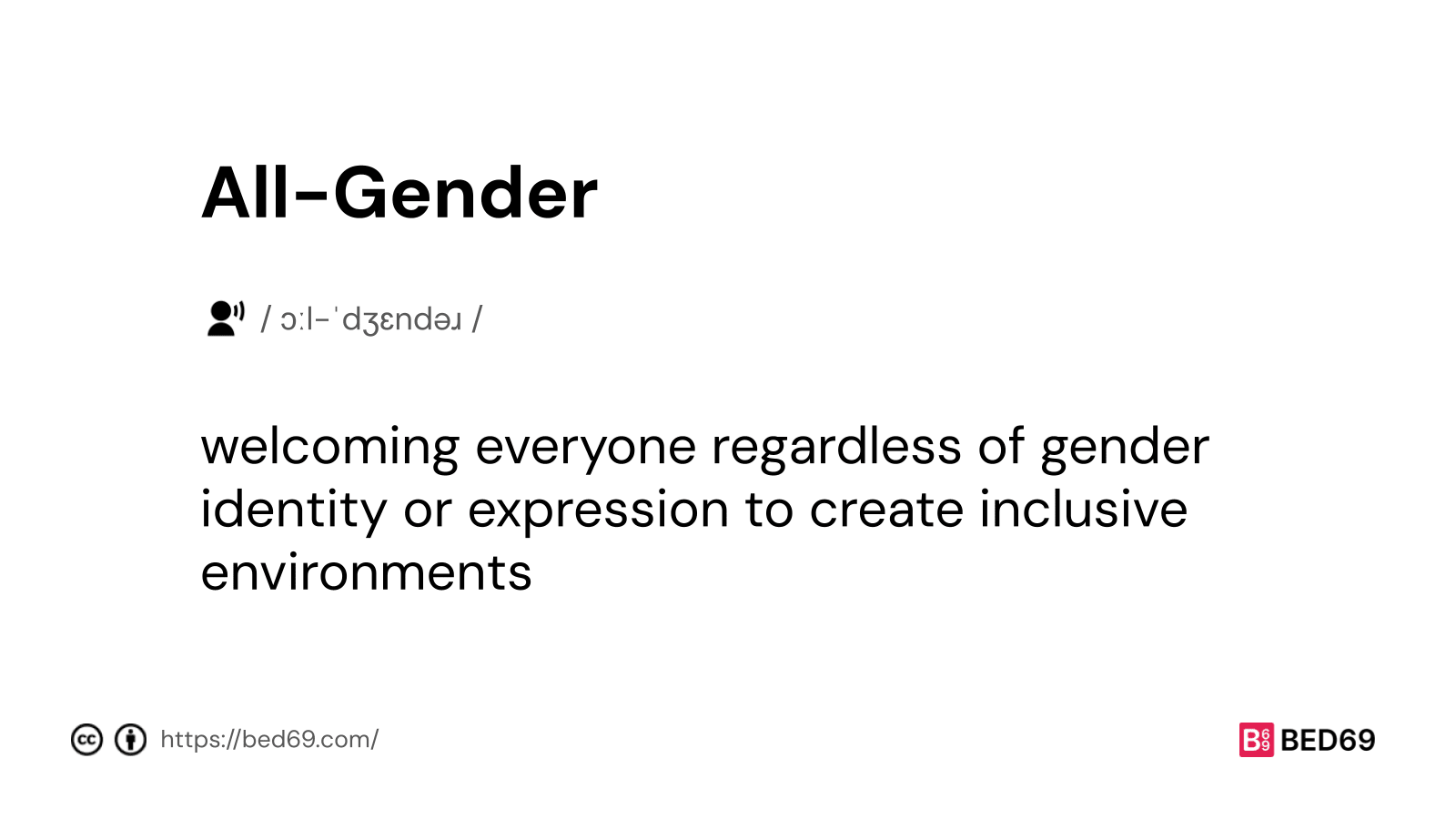What is All-Gender?
All-Gender means welcoming everyone, no matter how they identify or express their gender. It aims to create safe spaces for transgender, intersex, and non-binary individuals. Examples include all-gender bathrooms and housing. Some may use non-traditional pronouns like ze, hir, or they.
All-Gender pronunciation: / ɔːl-ˈdʒɛndəɹ /

How does All-Gender inclusion impact communities
All-Gender inclusion positively impacts communities by fostering environments where everyone, regardless of gender identity, feels valued and respected. It promotes a sense of safety and acceptance for transgender, intersex, and non-binary individuals, leading to increased inclusivity and diversity within society. By embracing All-Gender practices, communities demonstrate a commitment to equality and understanding, creating spaces where individuals can freely express themselves without fear of discrimination or exclusion.
Moreover, All-Gender initiatives encourage empathy and education, promoting a culture of openness and tolerance towards diverse gender identities. This not only benefits those directly impacted but also cultivates a more compassionate and harmonious community overall. By normalizing the use of non-traditional pronouns and providing inclusive facilities like all-gender bathrooms and housing, communities actively work towards breaking down barriers and challenging rigid gender norms, ultimately creating a more inclusive and equitable society for all.
Challenges faced in implementing All-Gender policies
Implementing all-gender policies can pose challenges. Some people may resist change due to unfamiliarity or discomfort with gender diversity. Institutions may face logistical issues, such as adapting existing facilities to be all-gender inclusive. Ensuring all staff and community members understand and support these policies is crucial for successful implementation.
Moreover, misconceptions and prejudices about gender diversity can hinder progress. Education and awareness are essential to combat these biases. Additionally, financial constraints might limit the resources available for creating all-gender spaces. Overcoming these challenges requires commitment from leadership, ongoing dialogue with stakeholders, and a willingness to address concerns openly and respectfully. By navigating these obstacles thoughtfully, organizations can create more inclusive environments for all individuals.
Explore other interesting terms:
